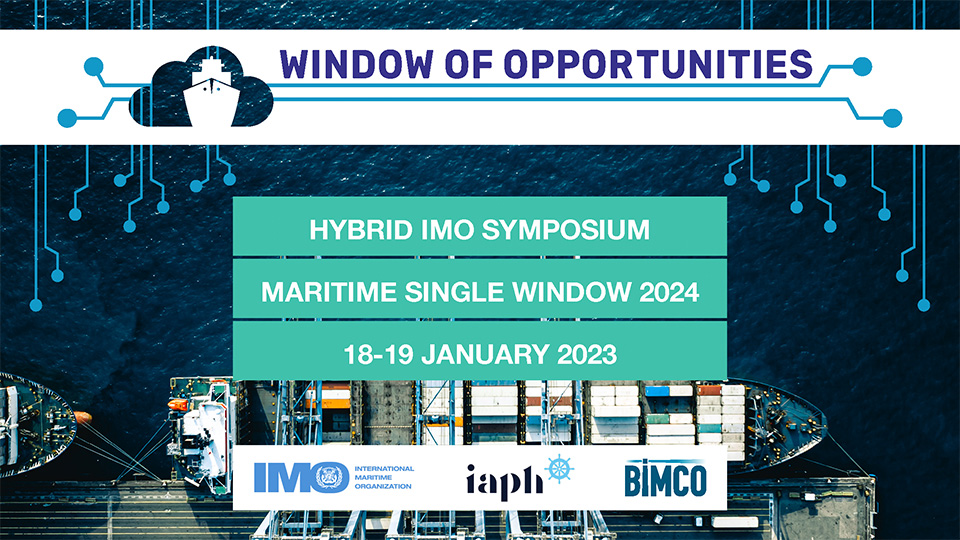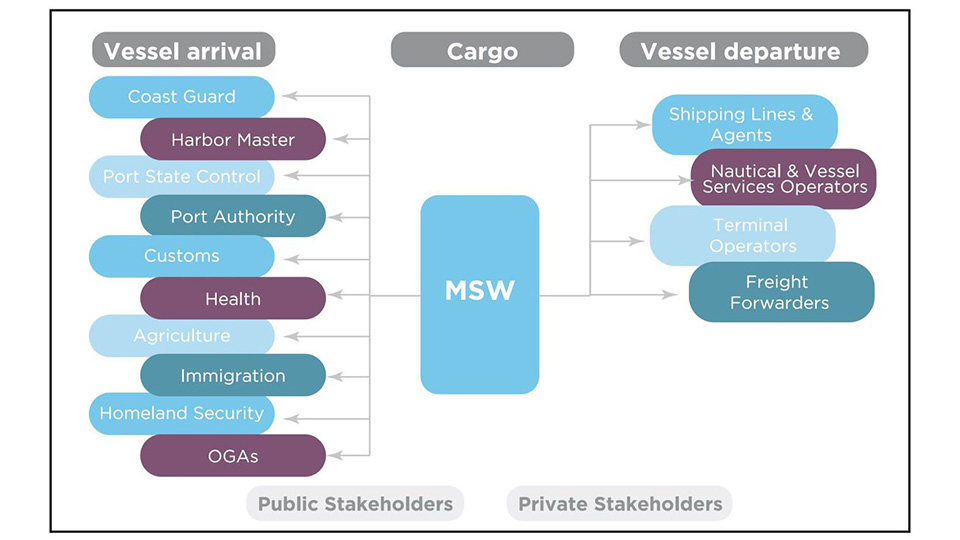
CONTACT BIMCO
Jeppe Skovbakke Juhl
Manager, Maritime Safety & Security
Copenhagen, Denmark
- +45 4436 6871
- hsse@bimco.org

By 1 January 2024, the single window for data exchange is to become mandatory in ports around the world, marking a significant step in the acceleration of digitalisation in shipping.
For all IMO member states, public authorities will need to establish, maintain, and use single window systems for the electronic exchange of information required on arrival, stay and departure of ships in ports.
In addition, public authorities will have to collaborate and combine the electronic transmission of the data to ensure that information is submitted or provided only once and reused to the maximum extent possible.
IAPH has partnered up with the International Maritime Organization (IMO) and BIMCO to help governments, ports, ship owners and operators and other public and private stakeholders to understand what this means, the benefits it has to offer and how to approach and implement a maritime single window.
a public-private data collaboration platform…
It enables an orchestration and optimisation of business processes between organisations involved in the arrival, stay and departure of ships in ports…
It achieves this through a single, “one truth” submission of standardised and harmonised data.

The IMO has prepared a short animation explaining why digitalisation is key to facilitating international maritime traffic, and why everyone can benefit from communicating electronically between ship and shore.
What is FAL and why is it important?
When a ship comes in to port it may be the end of a voyage but it’s just the beginning of a whole range of administrative tasks that need to be done.
This includes but is not limited to: customs declarations for cargo and ships’ stores; immigration clearance for crew and passengers and their baggage; import and export permits. In fact, these are just the tip of the iceberg. And when the ship leaves, it’s the same process all over again. This is what is called the Facilitation of International Maritime Traffic – or FAL for convenience.
For international shipping, a unified, global approach to FAL is vital. These activities are regulated and streamlined by an international treaty called the FAL Convention. This treaty is continually amended and updated by Governments at the FAL Committee of IMO, which meets once per year.
Which are the principal FAL documents containing the basic information that needs to be exchanged electronically?
The main documents with the data which need to be exchanged electronically between ship and shore are as follows:
For declarations that may be required in paper form by the public authorities in exceptional circumstances, check APPENDIX 2 on this same PDF.
There are other forms with data which should be included for consideration. For more information, contact the IMO Trade Facilitation team.
What is the IMO Compendium and how is it related to a Maritime Single Window?
As of 1 January 2024, public authorities will be required to provide all information required to a “single window” by electronic means. This applies to all the information needed to fulfil the standard regulatory requirements – the cargo declaration, dangerous goods declaration, crew manifests, vessel details and so on.
The IMO trade facilitation team has developed the IMO Compendium, a technical reference manual for software developers within the relevant public authorities. The IMO Compendium harmonises the data elements requested by the various public authorities and standardises the many different electronic messages that need to be exchanged, which is the key to data quality and good data orchestration between all parties.
What guidance has the IMO provided for implementing a Maritime Single Window?
The IMO has created some guidelines for public authorities and port authorities, defining, on a highly detailed document, how to set up a Maritime Single Window using the IMO compendium.
You can download this important reference document here. A lot of the contents of this document will be explained at the upcoming IMO – IAPH BIMCO hybrid symposium.
What useful links can you offer for more detailed information on FAL, the IMO Compendium and the work of the IMO FAL Committee?
You can find all relevant information on this very useful IMO portal.
IAPH has partnered up with IMO and BIMCO to organise a hybrid symposium on 18 and 19 January 2023v to support member state governments, port authorities and administrations, shipowners and other stakeholders in implementing a maritime single window in countries. It includes explanations on the January 1 2024 requirement, a high level overview of benefits and more detailed technical sessions to assist implementation, including practical case examples from small and large countries who have implemented a Maritime Single Window in their country.
If you cannot attend the event in person, you can connect to the event online starting at 09:30 UTC on 18 January on the IMO YouTube Channel which will be broadcasting the two-day event live. There is no need for registration.